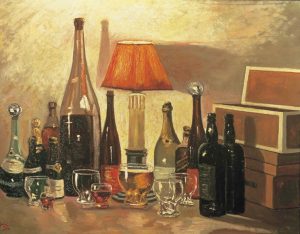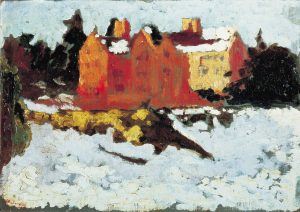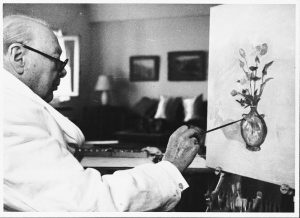
Finest Hour 177
Painting the Royal Navy: Churchill’s Brush with Nostalgia
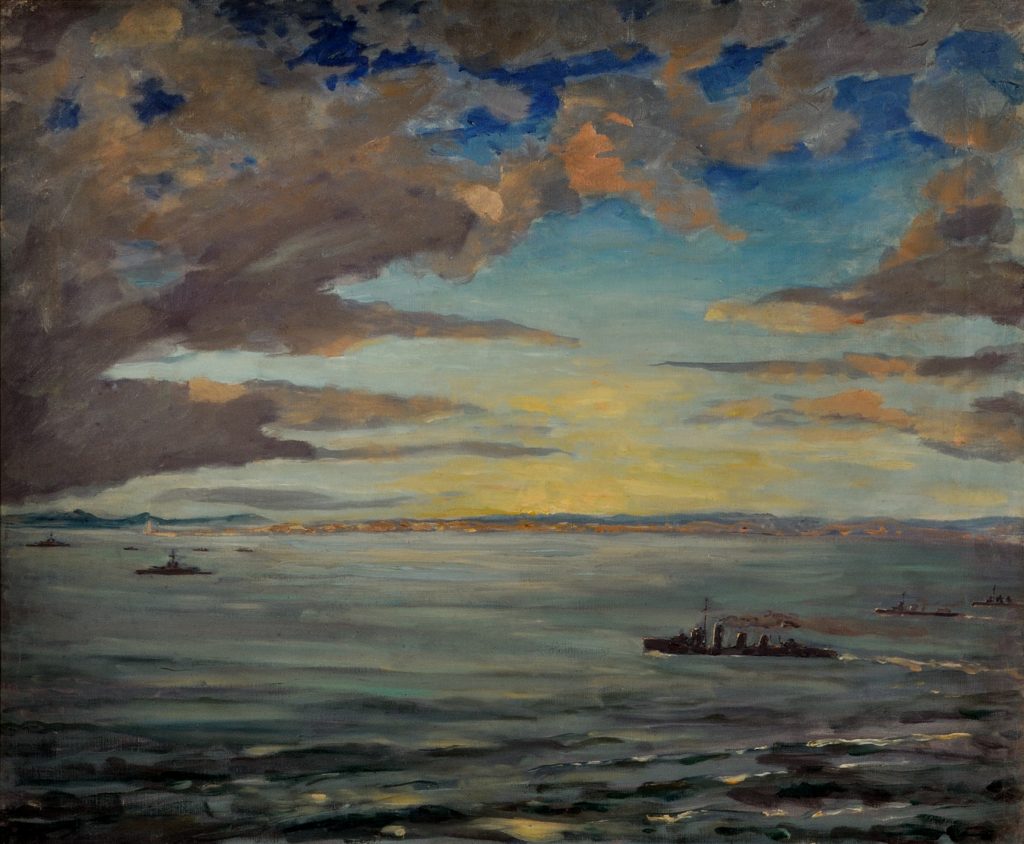
The Firth of Forth
October 5, 2017
Finest Hour 177, Summer 2017
Page 44
By Timothy Riley
Within weeks after his resignation as First Lord of the Admiralty in the aftermath of the disastrous Dardanelles campaign in 1915, a despondent Winston Churchill—together with his younger brother Jack and sisterin-law Gwendeline Churchill—rented a cottage at Hoe Farm in Surrey. “I had great anxiety and no means of relieving it,” he recalled in his 1921 essay “Painting as a Pastime.” With Gwendeline’s encouragement, Churchill found relief: in painting. For the rest of his life—at home, on holiday, and even, occasionally, on the battlefield—Churchill’s oils were rarely far from hand. Painting was a joy and a consolation, a source of sustenance and an intellectual challenge.
Among Churchill’s nearly 600 canvases, two of them, created nearly thirty years apart, reveal Churchill’s affection for—indirectly and directly—the Royal Navy. A close examination of these two canvases may reveal something more: nostalgia.
Portrait of Lady Churchill at the Launching of HMS Indomitable, is Churchill’s affectionate portrait of his wife Clementine. Likely created in 1955 (Indomitable was sold for scrap that same year), the painting hangs at Chartwell today. The work is a striking and nostalgic painting of Clementine looking resplendent in a sumptuous hat. Clementine’s joyous face is surrounded by rough-hewn background, giving the canvas an unfinished look. To create the composition, Churchill used a projector to enlarge one of his favorite photographs. The image was projected— in reverse of the original—onto the canvas, allowing Churchill to make a faithful, albeit larger, copy of the photo. The photograph was taken on 26 March 1940, the day Clementine formally christened HMS
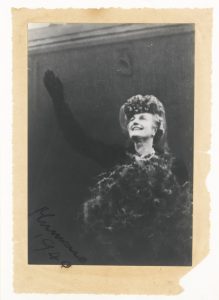

2024 International Churchill Conference
Indomitable, a modified Illustrious class aircraft carrier. Though he painted this portrait at age eighty—likely after stepping down from his second premiership—Churchill looks back with fondness at the time when he briefly served once again as First Lord of the Admiralty at the outset of the Second World War.
Firth of Forth, created more than thirty years earlier at about the time Churchill published “Painting as a Pastime,” depicts the British fleet at sail in Scotland. The painting, now in the collection of the National Churchill Museum, is unusual: it is the only one of Churchill’s paintings that depicts warships. While individual vessels in the painting have not been identified, the ship in the foreground resembles a British Acasta class destroyer, with its three funnels, the first generally taller and slimmer than the remaining two. Acasta class destroyers were launched between 1912 and 1913, when Churchill led the Admiralty and strengthened and modernized the British fleet. The ships saw extensive action during the First World War. The last of them were scrapped in 1921.
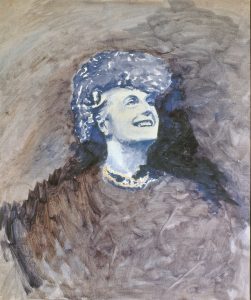
It may be impossible to know with certainty why Churchill chose to recall the Royal Navy when he created these paintings. It is possible, however, to imagine Churchill humming, with brush in hand, “Heart of Oak— all the while remembering with fondness the days when he was the political head of the most storied branch of Britain’s armed services.
In the words of the Royal Navy anthem “Heart of Oak”:
Heart of Oak are our ships,
Jolly Tars are our men,
We always are ready: Steady, boys, Steady!
We’ll fight and we’ll conquer again and again.
Timothy Riley is Sandra L. and Monroe E. Trout Director and Chief Curator of the National Churchill Museum at Westminster College.
Subscribe
WANT MORE?
Get the Churchill Bulletin delivered to your inbox once a month.
